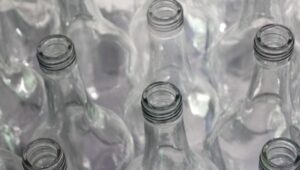The recycling of photovoltaic panels is a little considered issue, but remains one of the main problems with this technology for producing energy from renewable sources.
How to dispose of solar panels without harming the environment is the thinking of many organisations and energy companies. Who, are carrying out studies on the development of systems to reuse the materials that make up photovoltaic modules.
But let’s go in order, how are solar panels composed and what is their life cycle? How recyclable are photovoltaic panels really and who takes care of them?
Table of Contents
What is a photovoltaic panel
Photovoltaic panels are modules that have the ability to convert solar radiation – certainly the most common and modern source of sustainable energy – into electrical energy, reducing dependence on fossil fuels.
Today, tax breaks for energy saving and bonuses offer important support to those who decide to install a photovoltaic system for self-consumption of energy.
But, alas, not everyone thinks about the problem of when it is necessary to dispose of the panel of a system that has become obsolete or a broken panel. These are in fact electro-welded materials that are difficult to recycle. The figures speak of 78 million tonnes of panels reaching the end of their useful life by 2050.
The flat components of a photovoltaic system, in fact, have a lifetime of about 20 years. After which, they stop producing solar energy. The solution becomes urgent.
The following materials can first be recovered from the disposal of panels
- steel
- aluminium
- mineral oils
- lead
- copper
- glass
But some non-recyclable plastics can also be obtained.
Read also: Solar cells become paper-thin and could be applied anywhere to produce energy
How the collection of disused solar modules works
The various modules from a photovoltaic system must be taken to special facilities for fractioning, recovery and processing of recyclable materials.
Modules from the primary collection centres of different national and sometimes even international consortia can be taken to these plants. This is because a certain volume of material is required to operate the plant without too much financial loss.
There are three types of process for processing photovoltaic waste:
- mechanical plant, which is based on the removal of the frame and junction box, shredding and selection of materials for reuse;
- thermal treatment which recovers the raw materials through a thermal process;
- chemical process involving the use of chemicals to recover the reusable component.
The treatment can also comprise the three processes together, ensuring maximum results by dismantling and recycling.
What is the recycling process for photovoltaic modules
In general, the recycling process is structured in 3 steps:
- the photovoltaic module is disassembled, removing the frame and junction box;
- the glass is delaminated, a process that allows the glass to be separated and removed without contaminating it with other elements, thus enabling its total recovery;
- the only remaining metal panel is shredded in order to extract minerals such as copper, silicon powder and also plastics for disposal.
What is recovered from a solar panel
Considering a 22 kg photovoltaic panel, these quantities of material can be recovered:
- 13.8 kg of glass
- 2.9 kg of aluminium
- 2.8 kg of silicon
- 1.7 kg of plastics
- 0.2 kg of various metals
- 0.1 kg of circuit boards
Secondary raw materials, thus obtained from recycling, can be used in various sectors, for example in the production of insulation materials used in construction.
Copper and aluminium are reused as raw materials. The only materials that cannot be reused are plastics.
How much does it cost to dispose of solar panels?
The cost of recycling solar energy panels is not low, but the good news for the consumer is that their disposal is always paid for by the manufacturer as stipulated by law. Even without purchasing a new system or individual panel.
Manufacturers of electronic materials and also of renewable energy systems are registered with national consortia and their products from birth to end of life follow a certified process that ends with proper sorting and recycling.
Read also: E-waste, how and why it is important to recycle it












